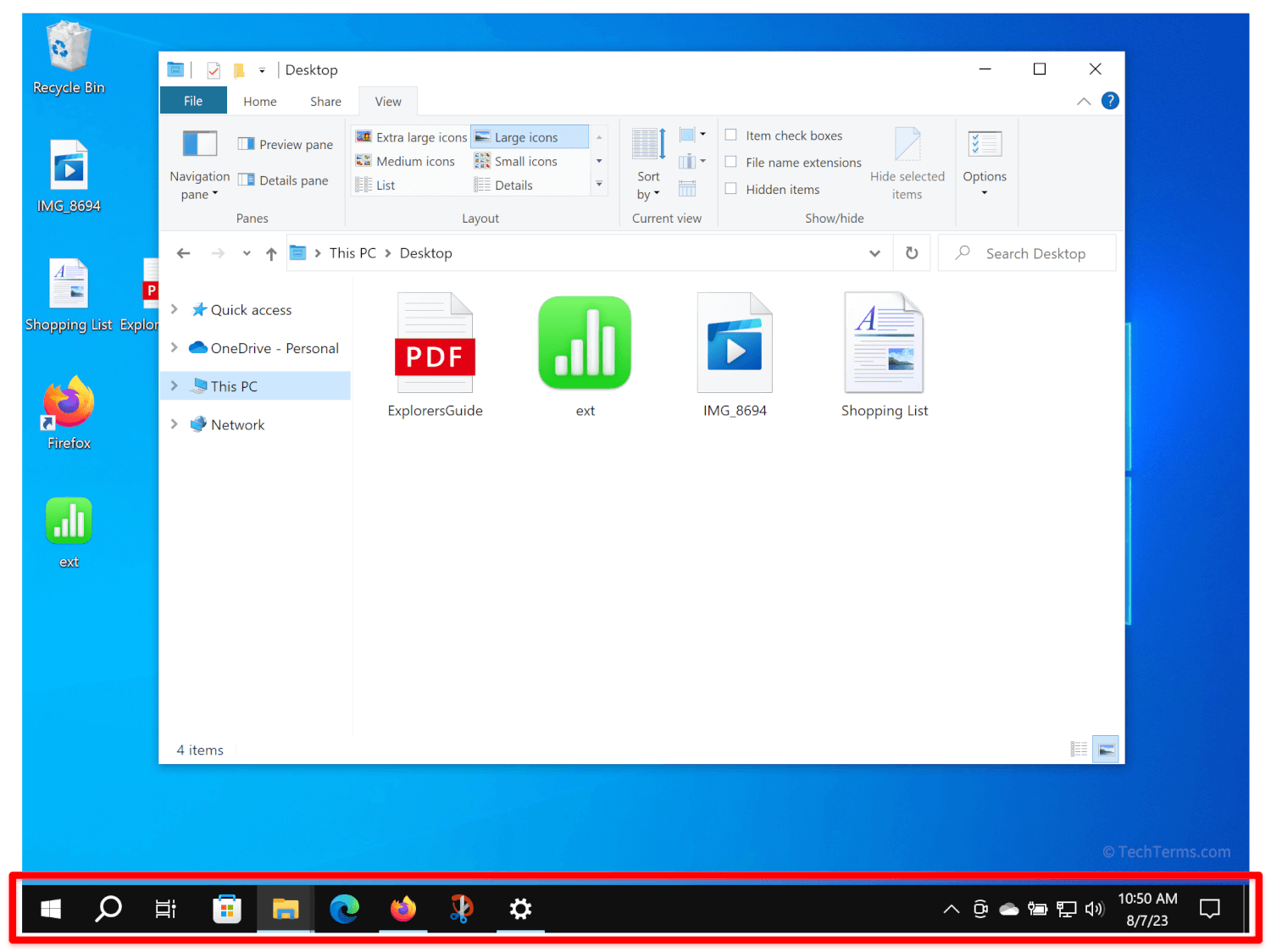Taskbar
The taskbar is a major GUI element in Windows that spans the lower edge of the desktop. It helps users quickly switch between open windows and applications with a single click. The taskbar includes icons for every application running on the computer, as well as the Windows Start button (on the left side) and the system tray (on the right). Users may also pin icons to it to create shortcuts to applications they use frequently.
The majority of the taskbar consists of a row of icons that represent both the application windows that are currently open and any other applications that you have chosen to pin to the taskbar. You can click a taskbar icon to launch that application, to bring its windows to the front, or to restore a minimized or hidden window. If an app has several windows open, clicking its taskbar icon will show thumbnails for each open window that you can choose from. You can click and drag icons on the taskbar to rearrange them. You can pin an application's icon to the taskbar while it is running by right-clicking it and selecting ; you can remove an icon by right-clicking it and selecting .
The Windows taskbar has seen several changes since its introduction in Windows 95. Windows XP added taskbar grouping, which condensed windows from the same application into a single button on the taskbar. Windows 7 removed the text labels from taskbar buttons to save space and allowed you to pin apps to the taskbar directly (instead of to a separate Quick Launch toolbar). Windows 10 added a search field and the Task View button to the taskbar (next to the Start menu). Windows 11 changed the look of the taskbar even further by changing the default alignment from left-aligned to center-aligned.
NOTE: Other operating systems include similar task switchers that allow users to switch between app windows. The macOS dock displays icons for open applications and pinned shortcuts, appearing as a floating element that adjusts its size as necessary. Several Linux desktop environments (like KDE Plasma and Unity) also use a taskbar-style application switcher on the bottom or side of the desktop.

 Test Your Knowledge
Test Your Knowledge